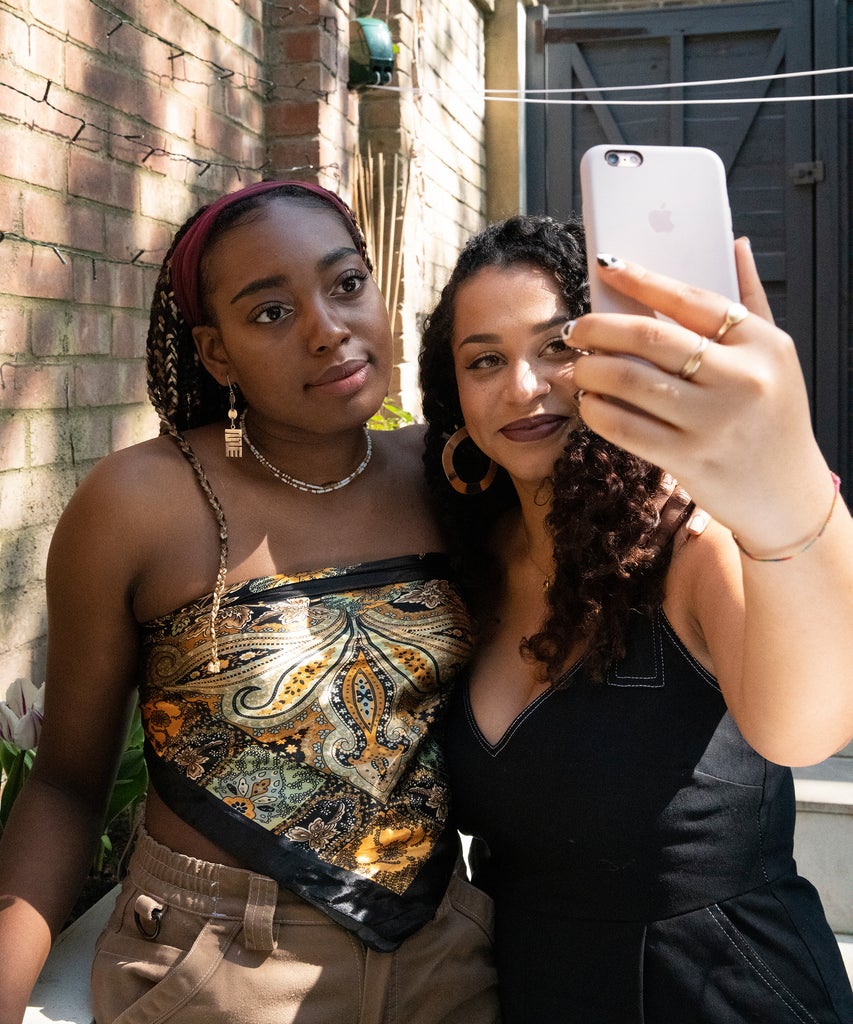
Maeve Ginzberg remembers when she first downloaded Snapchat. She was in high school, and did it at the request of her best friend; their long streak would eventually break when Maeve went to study abroad in college and had less-reliable cell service. Now a 27-year old copywriter living in New York, Maeve only uses Snapchat rarely — to stay in touch with one particular friend and also to keep up with a group Snap. The app has a sentimental appeal, says Maeve, who reflects on Snapchat’s unique way of reminding her of “stuff that just feels like a relic in a way.”
But it wasn’t always this way. When Snapchat launched in 2012, back when we used Vine and Musical.ly instead of TikTok, it wasn’t intended to be a vehicle for nostalgia. Like any social media platform, people joined Snapchat because their friends joined — because it was cool. We all want to go where the people are, and in the mid-2010s, Snapchat had an iron grip on the under-25 population. Unlike with Instagram, Twitter, or Facebook, where posts would live indefinitely, you had to actively be on Snapchat to know what was going on. The urgency of a one-second snap or a 24-hour story preyed on our fear of missing out. Celebrities like Kylie Jenner, DJ Khaled (“major key”), and Blac Chyna made headlines and added to pop culture by posting stories. Users refreshed over and over just to keep up.
But the app buckled under the weight of its own success. Despite a near-exhaustive market penetration, Snap sought to integrate other age groups and soon learned that the things that attracted boomers repelled zillennials. After a series of widely disliked redesigns, the social media platform began to hemorrhage users; Kylie Jenner’s infamous Tweet has been mythologized as the final blow.
But Snapchat is far from being a company in peril. According to the Pew Research Center, as of 2021 about 65% of 18-29-year-olds still use Snapchat — they couldn’t possibly all be creepy dudes looking to follow up with 19-year old Tinder matches. So, who are they?
Peter de Vreede is a 25-year-old living in Omaha, NE, and working in loan processing who first started using Snapchat when he was 19, at the behest of his then-girlfriend. He said his Snapchat use has dipped over the years, and that only recently has he started using it more frequently: “I typically use it when I have people around me that use and encourage me to.” He noted it’s been easy to jump back into things since Snapchat hasn’t changed much over the years. “I do share it with new people I meet, and I do post it on my online dating profiles.” He noted that pretty much everyone he knows uses Snapchat, and says, “As long as people around me still use it, I will continue to.”
This ability to dip in and out with ease makes Snapchat seem like a perfect case study of what happens when, rather than get addicted, we only sporadically engage (and disengage)t with social media. Perhaps that’s why I’ve never heard of people talk about Snapchat in the same passionate — or vehement — terms that they generally do about Instagram or Twitter (or Facebook, once upon a time). You use Snapchat when you want to and you don’t use it when you don’t. You’re there to maintain relationships and you’ll abandon the platform when those relationships disintegrate or migrate to another one. It’s not a hellscape, it’s just another place to be online.
Megan, a 33-year-old teacher in Massachusetts, remembers downloading Snapchat in 2014 because a friend told her she might like it. She noted that so much has changed over the past seven years — filters, stories, news — but the biggest change, she adds, has been her frequency of use: “Before there were groups that would get multiple snaps a day, and now those are pretty dead. It’s mostly just keeping up individual snap streaks.” One of her streaks has been continuously going for over 1,503 days. “I can’t remember the last time I shared my Snap information with anyone,” she said. “I mostly just use it to keep in touch with the people I’ve known since I first got the app.”
Maeve also admits that if it weren’t for her very active group chat, she would’ve abandoned Snapchat a long time ago. The group Snapchat is host to late-night dispatches from the group’s working nurses and journalists. One member has an ongoing taste-testing series. It also includes regular updates on the resident cats and dogs. It sounds a lot like a perfectly curated TikTok feed. Maeve also said she and her best friend have maintained a series of streaks over the years through daily selfies, video messages debriefing bad dates, or as a means of expediting what would otherwise be a long and tedious text.
A big part of Snapchat’s appeal is the lack of commitment it takes to enjoy it: Stories fade after 24 hours, messages disappear, and, even if you leave Snapchat, you can always connect with people via at least three other platforms. If you one day decided to delete Snapchat, you don’t lose a whole lot. Or do you? After all, Snapchat perfectly appeals to our wishy-washy ways of socializing online — following and unfollowing the same person, archiving posts we were once proud of, deactivating when we’re fed up, these things all require a lot of work and are often belabored decisions. No such maintenance and public relations go into a Snapchat profile. In fact, another reason why Snapchat might be so stress-free is that it’s very much not a part of our online meta-profiles, it plays a minor role in telling people who we are — they only get a glimpse.
Like what you see? How about some more R29 goodness, right here?
How Oysters Became The It Food Of Re-Emergence
from Refinery29 https://ift.tt/3fRFqQa
via IFTTT
